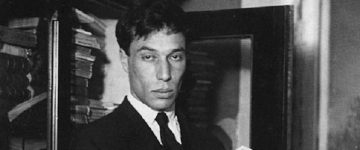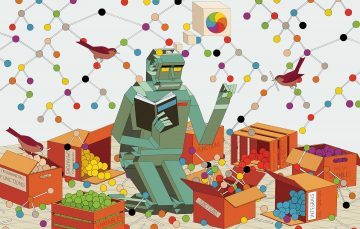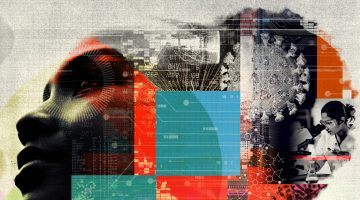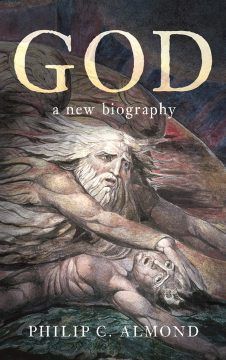Jenna Wortham in The New York Times:

In the wake of a perverse constellation of deaths of black Americans at the hands of the police and vigilantes, America’s current incarnation of a civil rights movement — organized under the rallying cry of “Black Lives Matter” — is more powerful than ever. “Seven years ago, we were treated like we were too radical, too out of the bounds of what is possible,” said Alicia Garza, the civil rights organizer based in Oakland, Calif., who coined the phrase in a 2013 Facebook post after George Zimmerman was acquitted of killing 17-year-old Trayvon Martin. “And now, countless lives later, it’s finally seen as relevant.”
The urgency and validity of the movement have finally been recognized, she told me, as the country has reached “its boiling point.”
For nearly 10 days straight, Americans have been gathering and marching to protest unchecked state violence against black people. Protests have erupted in virtually every American state, in small towns and major cities alike, and in Europe and New Zealand. Dozens of brands published social media posts vocalizing their support for the Black Lives Matter movement or against racism. Some, including those from Ben & Jerry’s, “Sesame Street” and Nickelodeon, felt more explicit and powerful than others. Taylor Swift responded to President Trump’s “when the looting starts, the shooting starts” tweet by accusing him of threatening violence after years of “stoking the fires of white supremacy and racism.” The “Star Wars” actor John Boyega gave an emotional speech at a protest in London.
This is the biggest collective demonstration of civil unrest around state violence in our generation’s memory. The unifying theme, for the first time in America’s history, is at last: Black Lives Matter.
Why now?
Rashad Robinson, the president of the civil rights organization Color of Change, speculated that it was the stark cruelty of the video of George Floyd’s death that captivated the country. The pain was palpable, the nonchalance in Derek Chauvin’s face, chilling. “The police officer is looking into the camera as he’s pushing the life out of him,” Mr. Robinson said.
More here.

 In 1916, the 26-year-old Agatha Christie finished writing her first detective novel at Dartmoor, a quiet upland in Devon, UK, known for its beautiful granite hilltops. Sir Arthur Conan Doyle had published The Hound of the Baskervilles, in 1902, which would become one of the most widely read Sherlock Holmes adventures—and the story was set in this same corner of the world, Dartmoor.
In 1916, the 26-year-old Agatha Christie finished writing her first detective novel at Dartmoor, a quiet upland in Devon, UK, known for its beautiful granite hilltops. Sir Arthur Conan Doyle had published The Hound of the Baskervilles, in 1902, which would become one of the most widely read Sherlock Holmes adventures—and the story was set in this same corner of the world, Dartmoor. The
The  As it turns out, humans are wired to worry. Our brains are continually imagining futures that will meet our needs and things that could stand in the way of them. And sometimes any of those needs may be in conflict with each other.
As it turns out, humans are wired to worry. Our brains are continually imagining futures that will meet our needs and things that could stand in the way of them. And sometimes any of those needs may be in conflict with each other. In the opening lines of Cold Warriors, Duncan White notes that “between February and May 1955, a group covertly funded by the Central Intelligence Agency launched a secret weapon into Communist territory”: balloons carrying copies of George Orwell’s
In the opening lines of Cold Warriors, Duncan White notes that “between February and May 1955, a group covertly funded by the Central Intelligence Agency launched a secret weapon into Communist territory”: balloons carrying copies of George Orwell’s  In the early nineteen-hundreds, the American writer O. Henry coined the term “banana republic” in a series of
In the early nineteen-hundreds, the American writer O. Henry coined the term “banana republic” in a series of  The idea for publishing a novel posthumously came to Kingston after learning of Mark Twain’s autobiography, which wasn’t released in uncensored form until 2010, a hundred years after his death. If Kingston knew that she wouldn’t have to answer for her work, perhaps she would be able to write more freely. At first, her notes represented an attempt to capture each day’s “intensity,” she said. In time, she realized that she had written about twelve hundred single-spaced pages. She continued writing. She told her agent, Sandy Dijkstra, that the book would remain unpublished for a hundred years. “I was stunned, shocked, and more,” Dijkstra said in an e-mail, “and told her that I could not promise to be a living and functioning agent a century from now.” Kingston has not shown her any of it. “Maybe you can persuade Maxine to show it to us much sooner,” she said. “Magical thinking works on the page, but not so well in real life.”
The idea for publishing a novel posthumously came to Kingston after learning of Mark Twain’s autobiography, which wasn’t released in uncensored form until 2010, a hundred years after his death. If Kingston knew that she wouldn’t have to answer for her work, perhaps she would be able to write more freely. At first, her notes represented an attempt to capture each day’s “intensity,” she said. In time, she realized that she had written about twelve hundred single-spaced pages. She continued writing. She told her agent, Sandy Dijkstra, that the book would remain unpublished for a hundred years. “I was stunned, shocked, and more,” Dijkstra said in an e-mail, “and told her that I could not promise to be a living and functioning agent a century from now.” Kingston has not shown her any of it. “Maybe you can persuade Maxine to show it to us much sooner,” she said. “Magical thinking works on the page, but not so well in real life.” From time to time, Andy Warhol entertained the wish to host a television show called Nothing Special, and to operate a chain of cafeterias for solitary diners, the Andy-Mat. A social oddity since his Dickensian childhood, Warhol retained the imprint of not-having and not-belonging into adulthood, acquiring vivid people he didn’t much care about and pricey objects he never looked at. To a society poised to reject him, he presented a façade of detachment from other people’s lives, even from his own: in an interview with Alfred Hitchcock, he said that getting shot had been “like watching TV.”
From time to time, Andy Warhol entertained the wish to host a television show called Nothing Special, and to operate a chain of cafeterias for solitary diners, the Andy-Mat. A social oddity since his Dickensian childhood, Warhol retained the imprint of not-having and not-belonging into adulthood, acquiring vivid people he didn’t much care about and pricey objects he never looked at. To a society poised to reject him, he presented a façade of detachment from other people’s lives, even from his own: in an interview with Alfred Hitchcock, he said that getting shot had been “like watching TV.” In January,
In January, By now, people treat neural networks as a kind of AI panacea, capable of solving tech challenges that can be restated as a problem of pattern recognition. They provide natural-sounding language translation. Photo apps use them to recognize and categorize recurrent faces in your collection. And programs driven by neural nets have defeated the world’s best players at
By now, people treat neural networks as a kind of AI panacea, capable of solving tech challenges that can be restated as a problem of pattern recognition. They provide natural-sounding language translation. Photo apps use them to recognize and categorize recurrent faces in your collection. And programs driven by neural nets have defeated the world’s best players at  Anthony Fauci, who leads the National Institute of Allergy and Infectious Diseases, believes a vaccine is unlikely to arrive within a year. Others in the field suggest even 18 months is optimistic, and that’s assuming it can be quickly mass produced and nothing goes wrong. As Bill Ackman, the billionaire and founder of investment firm Pershing Square, warns on CNBC, “Capitalism does not work in an 18-month shutdown.”
Anthony Fauci, who leads the National Institute of Allergy and Infectious Diseases, believes a vaccine is unlikely to arrive within a year. Others in the field suggest even 18 months is optimistic, and that’s assuming it can be quickly mass produced and nothing goes wrong. As Bill Ackman, the billionaire and founder of investment firm Pershing Square, warns on CNBC, “Capitalism does not work in an 18-month shutdown.” The soul exists. That’s what it does. It doesn’t need traditional religion or occultist speculation to justify, let alone explain, its existence. The soul can simply be a thing-in-itself, free from purpose or the need to be redeemed or maintained or isolated for study. We often talk about the soul simply as the nonmaterial and thus mysterious aspect of our being, something we feel but can’t point to—or what is silent and constant, enclosed in our mortal coil. It’s also entirely possible that there’s no nonmaterial part of our being, and whatever intangible dimension of ourselves we feel or think we feel is just, as yet, unexplained by science. Or maybe we do have souls, but they die with the body. Given such speculative uncertainty, the closest approach to the soul for many without recourse to religious reassurance is “consciousness,” though this may amount to no more than replacing one word with another.
The soul exists. That’s what it does. It doesn’t need traditional religion or occultist speculation to justify, let alone explain, its existence. The soul can simply be a thing-in-itself, free from purpose or the need to be redeemed or maintained or isolated for study. We often talk about the soul simply as the nonmaterial and thus mysterious aspect of our being, something we feel but can’t point to—or what is silent and constant, enclosed in our mortal coil. It’s also entirely possible that there’s no nonmaterial part of our being, and whatever intangible dimension of ourselves we feel or think we feel is just, as yet, unexplained by science. Or maybe we do have souls, but they die with the body. Given such speculative uncertainty, the closest approach to the soul for many without recourse to religious reassurance is “consciousness,” though this may amount to no more than replacing one word with another. Though Almond doesn’t outright say it, God: A New Biography implies that the various Reformation theologies emerging in early modernity were responsible not just for separating God from rational philosophical approximation, but for a certain anemic flattening of our language concerning the divine as well. What is thus born is the “God” whom most of us think of when we hear that word; not the cloud of unknowing of apophatic mystics or the “Ground of Being” of post-modern theologians, but the white-haired “Nobodaddy” dismissed by William Blake. Such a God has little to do with conceptions of ultimate meaning, and is rather a projected dictatorial figure, not the domain of ultimate significance to be discussed, but rather an idol to be dismissed. Rejected, for that matter, by the forward-thinking peasants of Soira and dismissed by many today (including myself). It would be a mistake to read that as necessarily an atheism. Speaking for myself, what I reject is that limited definition of God, rather than the discourse toward ultimate meaning which Almond so capably describes over the course of his book.
Though Almond doesn’t outright say it, God: A New Biography implies that the various Reformation theologies emerging in early modernity were responsible not just for separating God from rational philosophical approximation, but for a certain anemic flattening of our language concerning the divine as well. What is thus born is the “God” whom most of us think of when we hear that word; not the cloud of unknowing of apophatic mystics or the “Ground of Being” of post-modern theologians, but the white-haired “Nobodaddy” dismissed by William Blake. Such a God has little to do with conceptions of ultimate meaning, and is rather a projected dictatorial figure, not the domain of ultimate significance to be discussed, but rather an idol to be dismissed. Rejected, for that matter, by the forward-thinking peasants of Soira and dismissed by many today (including myself). It would be a mistake to read that as necessarily an atheism. Speaking for myself, what I reject is that limited definition of God, rather than the discourse toward ultimate meaning which Almond so capably describes over the course of his book. Welcome to Cowardly Police News!” booms Zung Jung-ngai. Dressed in a crisp white shirt, black tie and bin bags that cover his neck and hands, Zung beams at his audience of prospective recruits to the Hong Kong Police Force. Want a job that guarantees good health? Where you can get “protective biohazard suits’’ quicker than front-line medics fighting coronavirus? Where you can obtain AR-15s, water cannons and gas masks? Zung looks into the camera: all you need to do, he says, is join the police.
Welcome to Cowardly Police News!” booms Zung Jung-ngai. Dressed in a crisp white shirt, black tie and bin bags that cover his neck and hands, Zung beams at his audience of prospective recruits to the Hong Kong Police Force. Want a job that guarantees good health? Where you can get “protective biohazard suits’’ quicker than front-line medics fighting coronavirus? Where you can obtain AR-15s, water cannons and gas masks? Zung looks into the camera: all you need to do, he says, is join the police. James Mattis, the esteemed Marine general who resigned as secretary of defense in December 2018 to protest Donald Trump’s Syria policy, has, ever since, kept studiously silent about Trump’s performance as president. But he has now broken his silence, writing an extraordinary broadside in which he denounces the president for dividing the nation, and accuses him of ordering the U.S. military to violate the constitutional rights of American citizens. “I have watched this week’s unfolding events, angry and appalled,” Mattis writes. “The words ‘Equal Justice Under Law’ are carved in the pediment of the United States Supreme Court. This is precisely what protesters are rightly demanding. It is a wholesome and unifying demand—one that all of us should be able to get behind. We must not be distracted by a small number of lawbreakers. The protests are defined by tens of thousands of people of conscience who are insisting that we live up to our values—our values as people and our values as a nation.” He goes on, “We must reject and hold accountable those in office who would make a mockery of our Constitution.”
James Mattis, the esteemed Marine general who resigned as secretary of defense in December 2018 to protest Donald Trump’s Syria policy, has, ever since, kept studiously silent about Trump’s performance as president. But he has now broken his silence, writing an extraordinary broadside in which he denounces the president for dividing the nation, and accuses him of ordering the U.S. military to violate the constitutional rights of American citizens. “I have watched this week’s unfolding events, angry and appalled,” Mattis writes. “The words ‘Equal Justice Under Law’ are carved in the pediment of the United States Supreme Court. This is precisely what protesters are rightly demanding. It is a wholesome and unifying demand—one that all of us should be able to get behind. We must not be distracted by a small number of lawbreakers. The protests are defined by tens of thousands of people of conscience who are insisting that we live up to our values—our values as people and our values as a nation.” He goes on, “We must reject and hold accountable those in office who would make a mockery of our Constitution.”